Posts Tagged: digger bee
Ready or Not, Here I Come!
Ready or not, here I come! "Wait, can you slow down a bit?" I ask. "I can't focus when you move so fast!" No, sorry! I'm in a hurry! Anthophora...
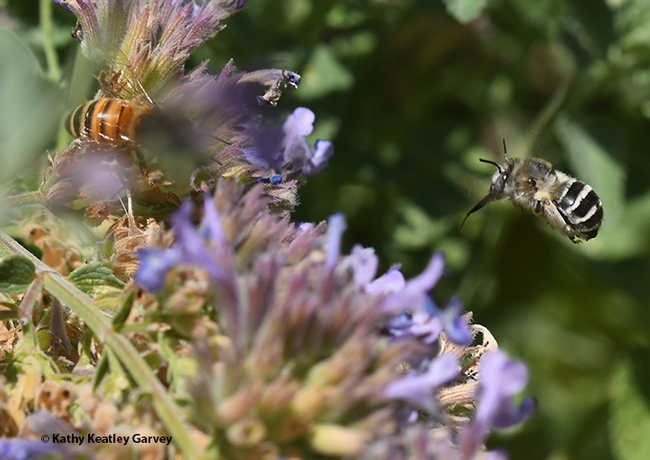
A digger bee, Anthophora urbana in flight, as it heads for another catmint blossom. (Photo by Kathy Keatley Garvey)
Ever Seen a Cuckoo Bee?
Ever seen a cuckoo bee? They're also called parasitic bees or "kleptoparasites" or "cleptoparasitises." They cannot carry pollen (no...
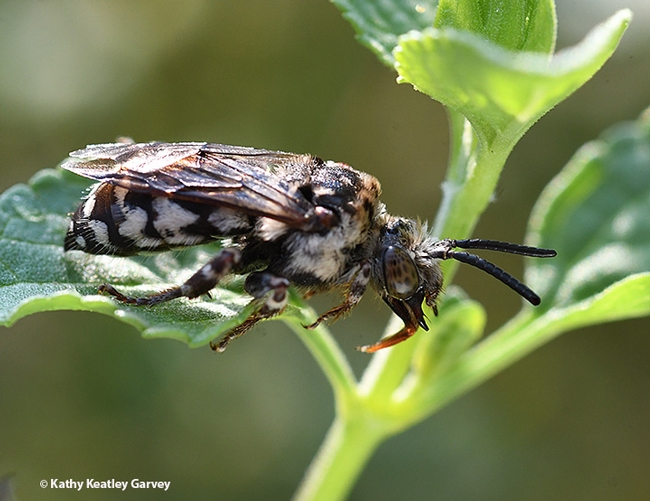
A cuckoo bee, Xeromelecta californica, rests on a leaf in a Vacaville pollinator garden. (Photo by Kathy Keatley Garvey)
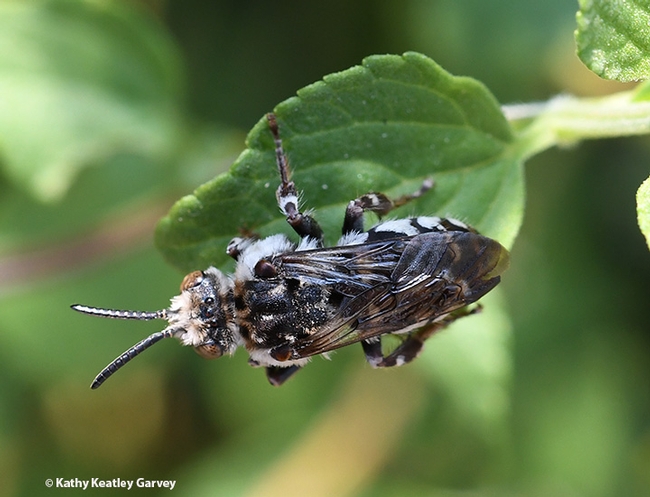
Dorsal view of the cuckoo bee, Xeromelecta californica, in a Vacaville pollinator garden. It flew just after this image was made. (Photo by Kathy Keatley Garvey)
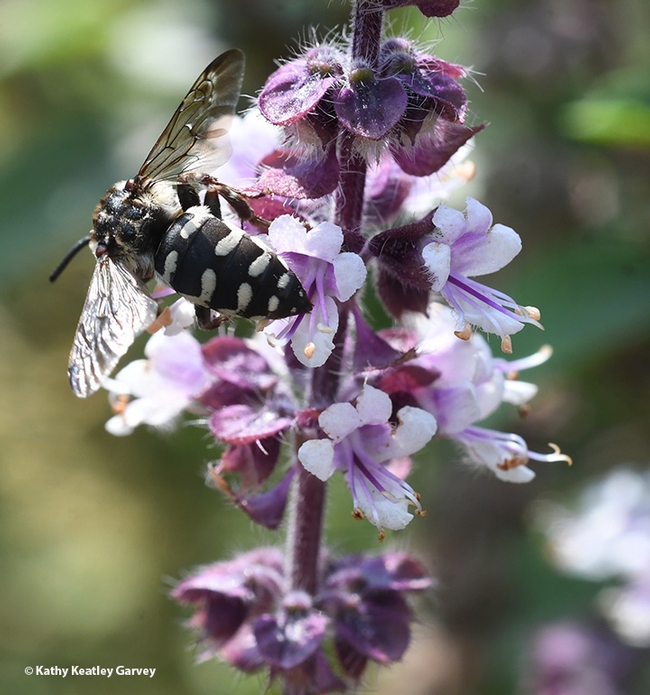
The cuckoo bee, Xeromelecta californica, sipping some nectar. (Photo by Kathy Keatley Garvey)
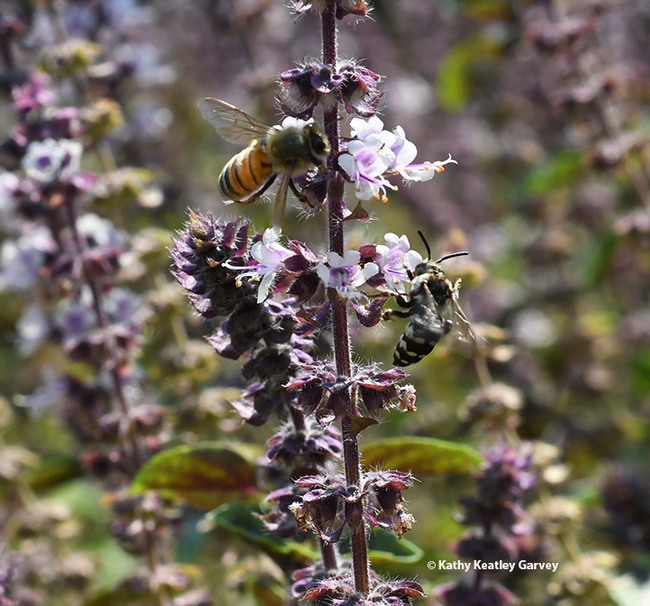
A honey bee, Apis mellifera, and a cuckoo bee, Xeromelecta californica, sharing African blue basil blossoms. (Photo by Kathy Keatley Garvey)
From Out of the Blue Pops the Anthophora
From out the blue. And sometimes it's too good to be true. We were visiting the Sunset Gardens at the Sonoma (Calif.) Cornerstone on...
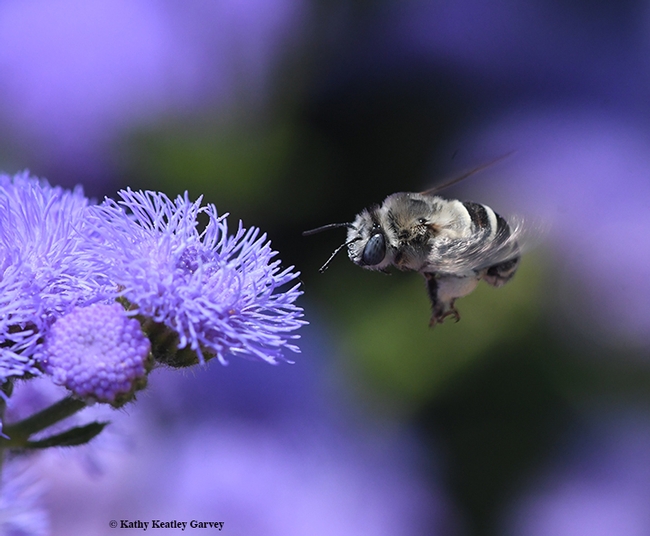
First of four images: A digger bee, Anthophora urbana, heads for a Ageratum houstonianum 'Blue Horizon' at the Sunset Gardens, Sonoma Cornerstone. (Photo by Kathy Keatley Garvey)
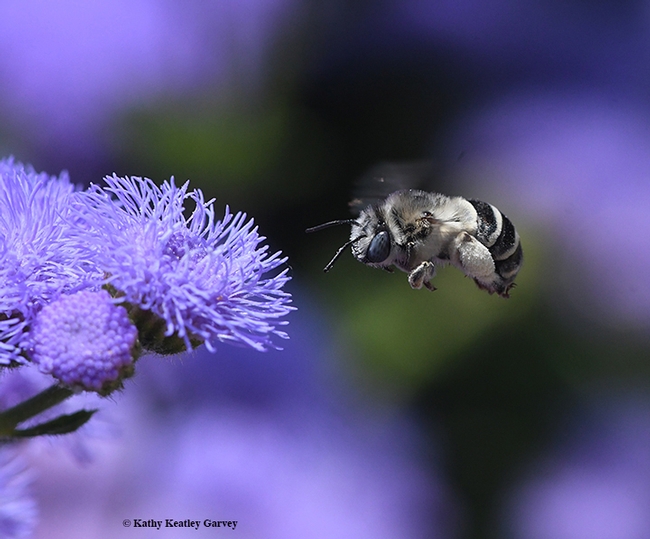
Second of four images: A digger bee, Anthophora urbana, heads for a Ageratum houstonianum 'Blue Horizon' at the Sunset Gardens, Sonoma Cornerstone. (Photo by Kathy Keatley Garvey)
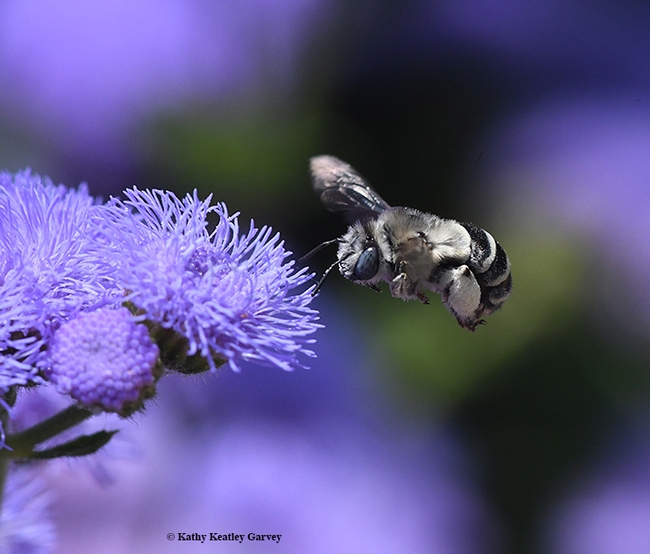
Third of four images: A digger bee, Anthophora urbana, heads for a Ageratum houstonianum 'Blue Horizon' at the Sunset Gardens, Sonoma Cornerstone. (Photo by Kathy Keatley Garvey)
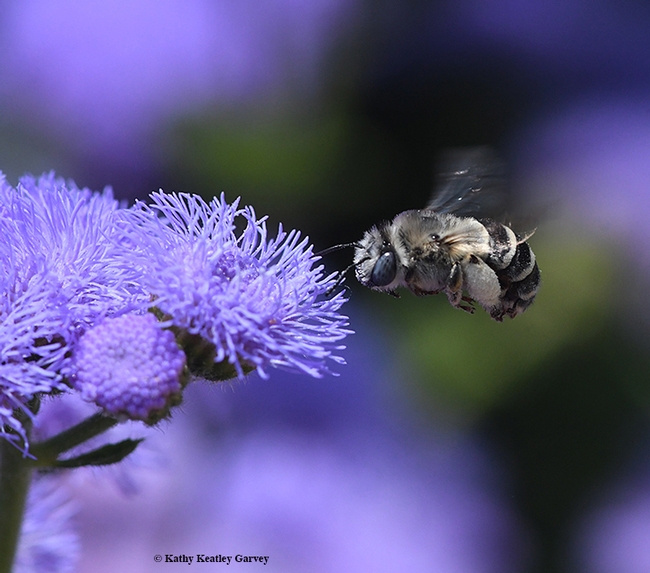
Fourth of four images: A digger bee, Anthophora urbana, heads for a Ageratum houstonianum 'Blue Horizon' at the Sunset Gardens, Sonoma Cornerstone. (Photo by Kathy Keatley Garvey)
The Amazing Bee-Parasite Research of Leslie Saul-Gershenz
Evolutionary ecologist Leslie Saul-Gershenz goes places where many have been but few have ever really seen. Bees and blister beetles, yes. We...
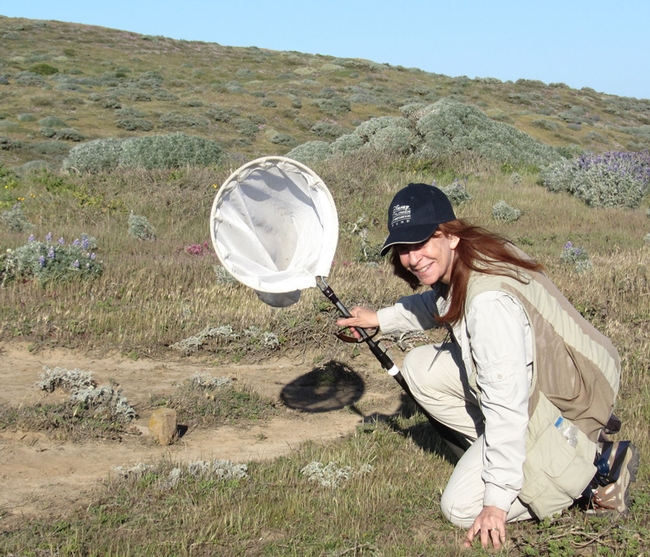
Leslie Saul-Gershenz in the Channel Island National Park conducting a native bee survey.
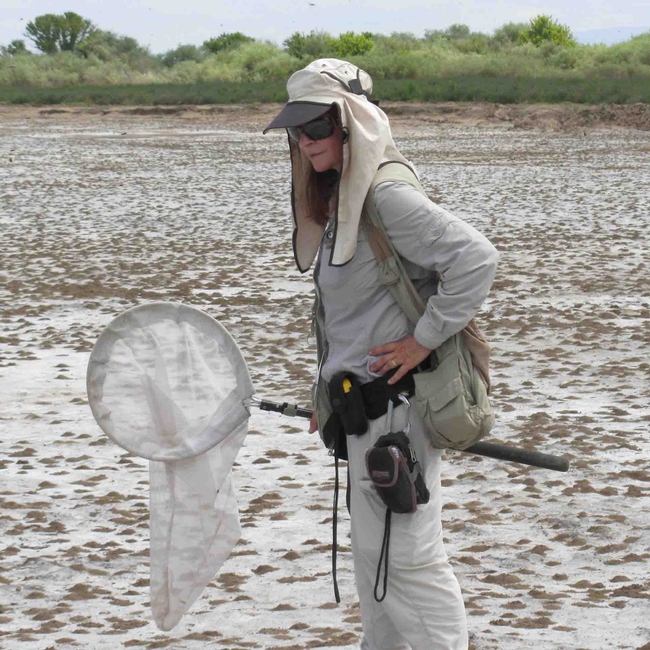
Leslie Saul-Gershenz doing field work on bee nesting beds of the solitary bee, Nomia melanderi, in Walla Walla, Wash. (2010-2015).
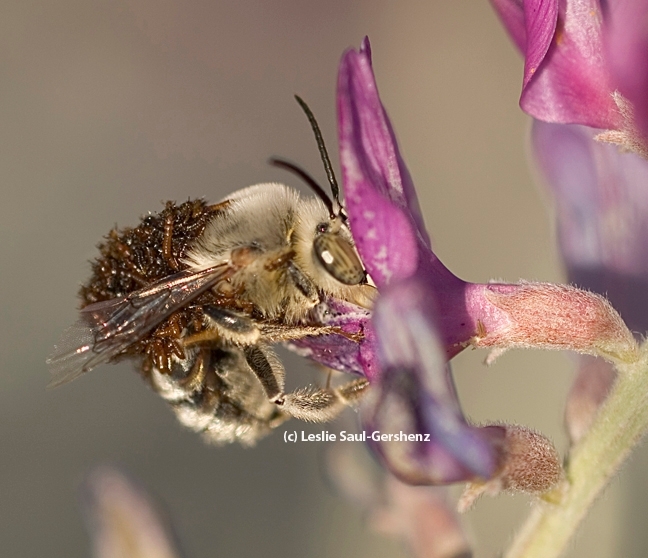
A digger bee, Habropoda pallida, with blister beetle larvae. (Photo by Leslie Saul-Gershenz)
The Sneaky Cuckoo Bee
You could call it a slacker, a deadbeat, a moocher, a sponger, or a loafer. Or you could call it a cuckoo bee. Take the cuckoo bee, Xeromelecta...
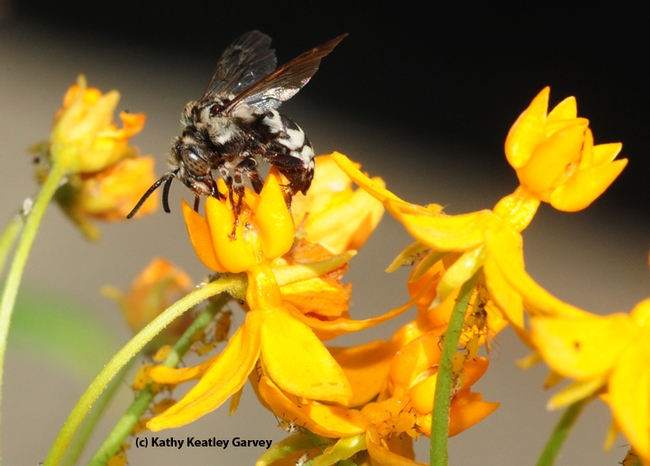
A cuckoo bee, Xeromelecta californica, sips nectar from a tropical milkweed, Asclepias curassavica, in Vacaville, Calif. (Photo by Kathy Keatley Garvey)
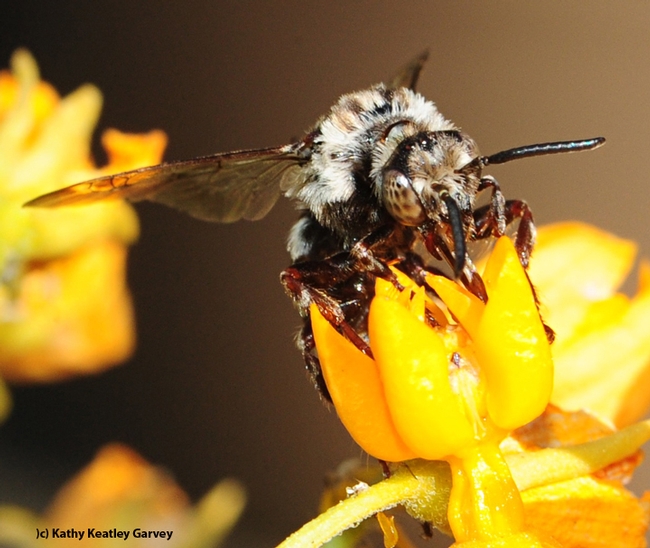
Close-up of a cuckoo bee, Xeromelecta californica, on a tropical milkweed, Asclepias curassavica. (Photo by Kathy Keatley Garvey)
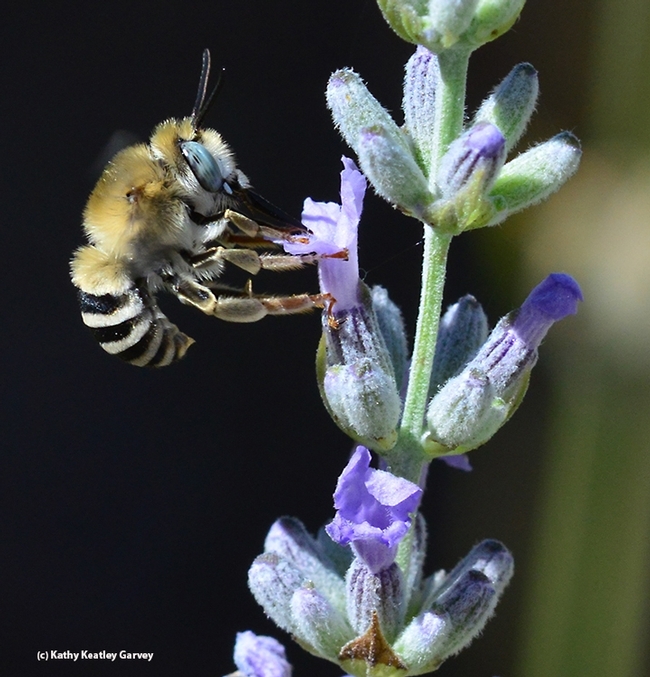
A digger bee, Anthophora urbana, sips nectar from lavender. The cuckoo bee, Xeromelecta californica, is a parasite of Anthophora. It lays eggs in the host's nest, resulting in death of the host's offspring. (Photo by Kathy Keatley Garvey)

